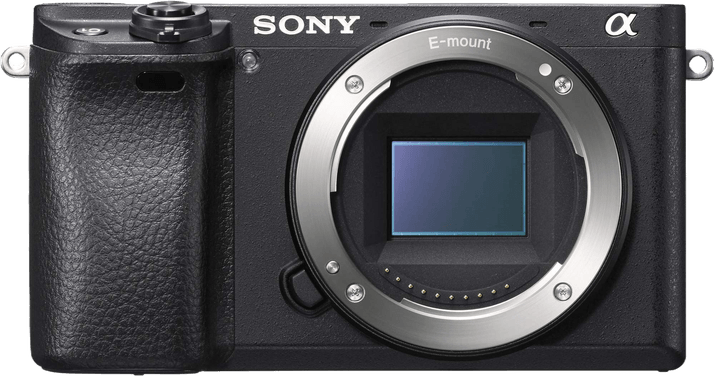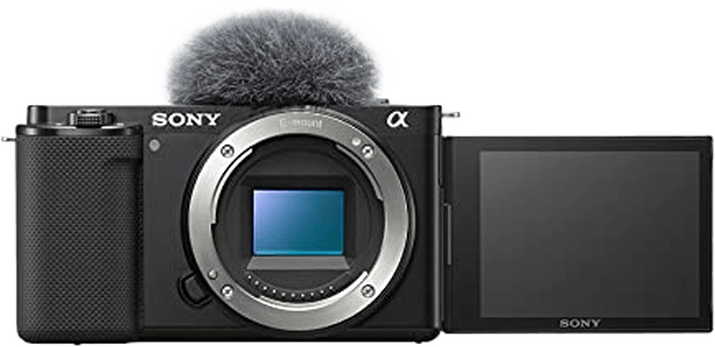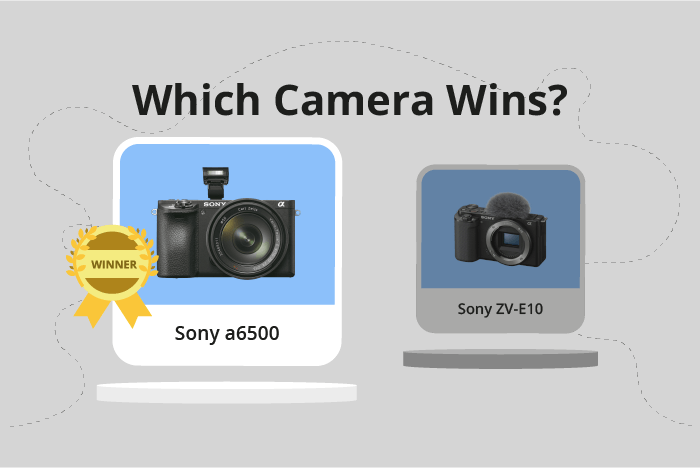Sony a6500 vs ZV-E10 Comparison
Sony a6500

Sony ZV-E10

The Sony a6500 outperforms the Sony ZV-E10 with a score of 72/100 compared to 65/100. Both cameras are mirrorless and share similar announcement dates, with the a6500 released in 2016 and the ZV-E10 in 2021. The a6500 boasts a larger size (120 x 67 x 53mm) and weight (453g), while the ZV-E10 is smaller (115 x 64 x 45mm) and lighter (343g).
The a6500’s higher score means it offers better performance and features than the ZV-E10. However, the ZV-E10 wins in terms of affordability, with a launch price of $700 compared to the a6500’s $1400.
Each camera has its strengths: the a6500 excels in performance, while the ZV-E10 is a more budget-friendly option.
Sony a6500 vs ZV-E10 Overview and Optics
The Sony a6500 outperforms the Sony ZV-E10 in optics with a score of 74/100 compared to 69/100. Both cameras share several specifications, including a CMOS sensor, Bionz X processor, Sony E lens mount, and an APS-C sensor size. They also have similar shooting speeds at 11 frames per second and comparable megapixels, with the a6500 at 24.2 and the ZV-E10 at 24.
The a6500 has a few advantages over the ZV-E10. It has a slightly higher megapixel count, providing slightly more detailed images. Additionally, the a6500 features built-in image stabilization, which is beneficial for capturing sharp images and smooth video, particularly in low light or when using longer focal lengths. The camera also has a 3:2 aspect ratio, which is more suitable for still photography, as it is closer to the dimensions of standard print sizes.
On the other hand, the ZV-E10 has a marginally higher DXOMARK score for the sensor at 86, compared to the a6500’s score of 85. This suggests that the ZV-E10’s sensor may perform slightly better in terms of dynamic range, color depth, and low-light performance. The ZV-E10 also has a 4:3 aspect ratio, which is more versatile for video recording and social media content.
Taking these factors into account, the Sony a6500 is the superior choice for photographers who prioritize image quality, stabilization, and a more traditional aspect ratio. Meanwhile, the Sony ZV-E10 may be more appealing to content creators who value a slightly better sensor performance and a more video-friendly aspect ratio.
Sony a6500 vs ZV-E10 Video Performance
The Sony ZV-E10 outperforms the Sony a6500 in video capabilities with a score of 91 against the a6500’s 77. Both cameras possess some common specifications, such as a maximum video resolution of 4K and a maximum video frame rate of 120fps. Despite these similarities, the ZV-E10 emerges as the superior choice for videographers.
The ZV-E10’s edge over the a6500 is due to its built-in time-lapse functionality, which the a6500 lacks. This feature allows the ZV-E10 to capture stunning time-lapse sequences without the need for additional software or external accessories, making it more convenient and versatile for video production. Additionally, the ZV-E10’s video dimensions are slightly different from the a6500’s, with a resolution of 3840 x 1920 compared to the a6500’s 3840 x 2160. This difference, however, does not significantly impact the overall video quality.
In contrast, the Sony a6500 does not offer any distinct advantages in video capabilities over the ZV-E10. It shares the same maximum video resolution and frame rate but falls short in terms of time-lapse functionality. Consequently, the a6500 may not be the ideal choice for videographers who prioritize time-lapse features.
Comparing the video capabilities of the Sony a6500 and the Sony ZV-E10, it is evident that the ZV-E10 provides superior functionality and versatility for video production. The inclusion of time-lapse functionality sets it apart, making it the preferred choice for videographers seeking both quality and convenience. While the a6500 delivers comparable video resolution and frame rate, its lack of built-in time-lapse features limits its appeal for those who prioritize this aspect of video production.
Sony a6500 vs ZV-E10 Features and Benefits
The Sony a6500 emerges as the winner in features, scoring 81/100, while the Sony ZV-E10 scores 68/100. Both cameras share several specifications, including a 3-inch screen size, touchscreen functionality, flip screen, absence of GPS, and the presence of WIFI and Bluetooth connectivity.
The Sony a6500 outperforms the ZV-E10 in screen resolution, with 921,600 dots compared to the ZV-E10’s 920,000 dots. This difference means the a6500 provides a slightly clearer and more detailed display for users, improving the overall shooting experience. The higher feature score of the a6500 signifies its superiority in additional features and functionality, making it a more versatile and user-friendly option for photographers and videographers.
On the other hand, the Sony ZV-E10, despite its lower feature score, may still be suitable for users with specific needs or preferences. It maintains all the essential features shared with the a6500, such as touchscreen, flip screen, WIFI, and Bluetooth. The marginally lower screen resolution may not be a deal-breaker for some users, especially if other factors such as price or availability play a more significant role in their decision-making process.
In comparing these two cameras, the Sony a6500 proves to be the better option due to its higher feature score and superior screen resolution. However, the Sony ZV-E10 remains a viable option for users who prioritize shared features and may not require the additional advantages offered by the a6500. Ultimately, the choice between these cameras depends on individual needs and preferences.
Sony a6500 vs ZV-E10 Storage and Battery
The Sony ZV-E10 wins in the storage and battery category with a score of 24/100, while the Sony a6500 scores 21/100. Both cameras have one memory card slot and accept SD/SDHC/SDXC and Memory Stick Pro Duo cards. They also use the same battery type, NP-FW50, and neither offers USB charging.
The ZV-E10’s advantage lies in its longer battery life, providing 440 shots compared to the a6500’s 350 shots. This allows users to capture more images before needing to replace or recharge the battery.
The a6500, however, does not have any significant advantages in this category. Both cameras are similar in terms of storage options and battery features.
Considering the storage and battery aspects, the Sony ZV-E10 is the better option due to its longer battery life, allowing for extended shooting sessions.
Sony a6500 vs ZV-E10 – Our Verdict
Are you still undecided about which camera is right for you? Have a look at these popular comparisons that feature the Sony a6500 or the Sony ZV-E10:

